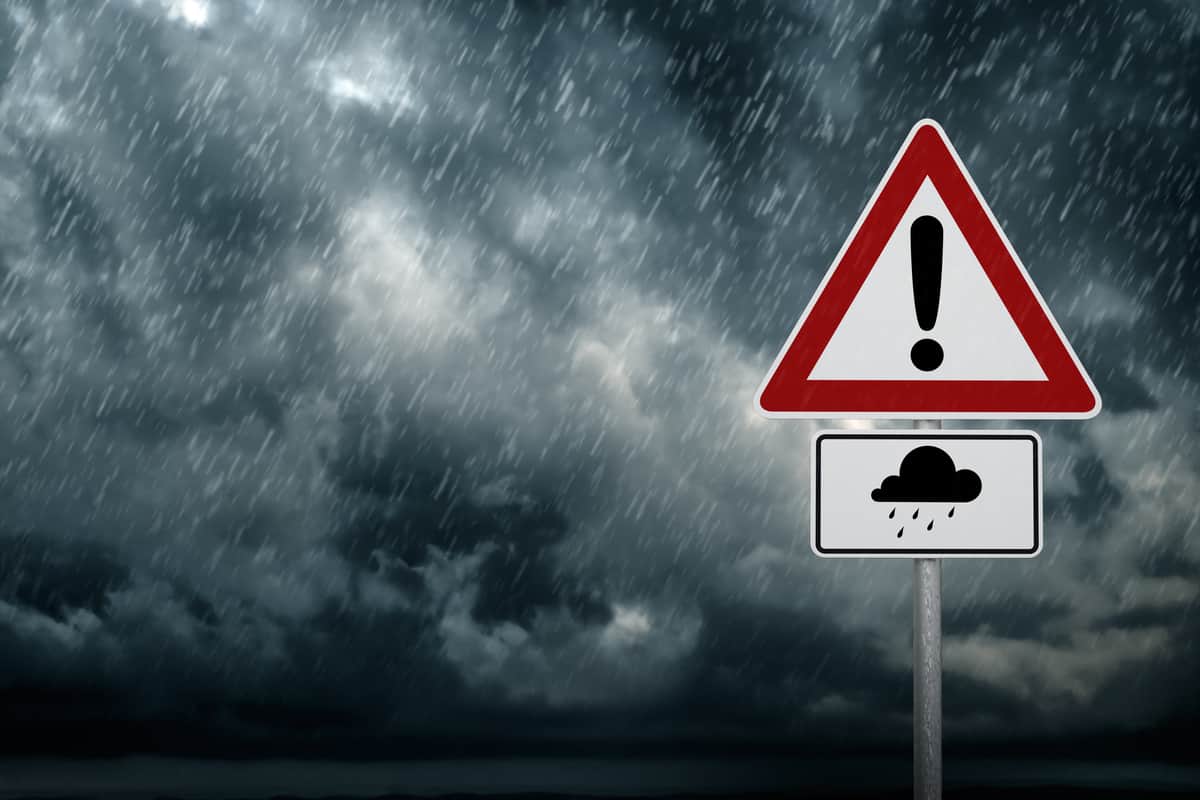
Wet, gloomy weather can make going out feel like a real chore. You’d probably rather get back in bed with your coffee than try to dash between the raindrops out to your car and get on the road to work, drop off your reluctant kids to school or do errands that just can’t wait. With an average of 63 inches of rain per year in New Orleans, driving in the rain is inevitable. Though you may think of wet weather driving as merely unappealing, it also poses additional safety risks.
Weather is a significant factor in safe driving, with rain being a major culprit. According to the US Department of Transportation, 75 percent of weather-related vehicle crashes occur on wet pavement and 47 percent happen during rainfall. These accidents result in death for more than 3,400 people, and 357,300 injuries each year. You may be surprised to learn that more accidents occur in rainy conditions than in snow, icy pavement or fog.
Rain reduces your tires’ traction. Water on the pavement mixes with oils and other residues on the road, creating a slick surface that increases the risk of skidding, and requiring longer braking distances. A layer of water on the road can cause your tires to glide on the water’s surface rather than grip the pavement – called hydroplaning – causing you to lose control.
Wet weather also reduces visibility, and it’s more difficult to see road markings, signs, and hazards. Using high beam headlights, which is a common mistake, will cause glare, making it much more difficult to see oncoming traffic.
Wet conditions also slow down the speed of the average driver. It’s important to drive slower for safety reasons, but it will inevitably take you longer to get to your destination.
Before you grab your umbrella and hope your shoes don’t get soaked on the way, learn these five tips for making your wet weather journey as safe as possible.
Make sure your visibility won’t be compromised in case of rain. Once a month, clean your windshield inside and out to get rid of smudges, dust and dirt. Check your windshield wiper blades for wear and tear and keep a spare set inside your car – you don’t want to get caught out with a worn-out windshield wiper in the middle of a downpour! Also, check the level of your windshield wiper fluid so you can immediately clean the glass if anything soils it while you’re driving.
Good tires are also fundamental to driving safely in the rain. Check your tire air pressure once a month. The manufacturer’s recommendation can be found on your car door edge, glove compartment door or fuel door, or check your owner’s manual. (Remember that the number listed on the side of the tire is the maximum air pressure). Also, keep an eye on your tires’ wear and tear. In order to prevent skids and hydroplaning, your tires should have a tread depth of 1/16 inch. A time-tested shortcut to check your treads is to insert a penny into the tread with Lincoln’s head upside down and facing you. If you can see all of Lincoln’s head, it’s time to replace that tire.
You should have your tires rotated every 6,000 – 7,000 miles. Some tire shops will do this at an annual rate and can send you a reminder that your rotation is due.
Finally, before you go out, check your headlights, taillights and signal lights. With lower visibility in the rain, you need to make sure you can see the road, and that other cars can see you.
No one likes to be delayed getting to their destination, and being out in the elements might make you want to get your drive over with and hurry home. But rainy weather means it’s time to forget being in a rush. Driving slower reduces the risk of hydroplaning, and if the car ahead of you stops suddenly, you’ll need additional braking distance to avoid causing an accident. A good rule of thumb is to stay four car lengths behind the driver ahead. You’ll be glad you did if you must put on the brakes unexpectedly. This means that using cruise control on a wet day is a no-no.
As mentioned above, the best way to avoid hydroplaning is not to drive too fast. But if you feel your car starting to slide, it’s important to stay calm and take control of the situation. First, take your foot off the gas pedal to reduce your speed. Turn the wheel in the same direction your car is sliding. That is, if your car’s rear is sliding to the left, steer to the left; if your car’s rear is sliding to the right, steer to the right. This technique will stabilize your steering and will help the rear wheels to reconnect with the road. Once you regain control, pull over and take a few minutes to collect yourself – hydroplaning can be very frightening, and you may find your heart pounding after a close call.
As a rule, if you can’t see the markings on the road, the water is too deep, and you should not attempt to drive through it. Your car could slide off the road or become submerged, putting yourself at great risk of injury or even drowning. You could also irreversibly damage your car. Conditions can change unexpectedly, and the standing water could be an indicator of an impending flash flood. Don’t take chances – change the route of your trip.
Some road areas are more prone to flooding than others – such as areas with poor drainage, low-lying roads along rivers or estuaries, or bridge underpasses. If you’ve seen these locations flooded before, it’s likely they’ll flood again, so take some time to research an alternate route.
If you follow these tips and are unlucky enough to be involved in an accident, it could be the other driver’s fault. You can’t control the actions of others, the ability to seek legal help is in your hands. If you want to know your options, contact us for a consultation.

With over 50 years of legal experience serving families in the New Orleans area and surrounding Louisiana communities, our firm takes pride in providing clients with personalized legal services tailored to individual needs.